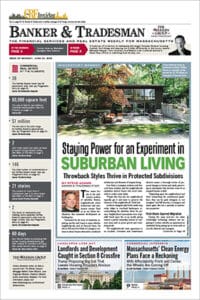While mortgage forbearances have continued to decline, the number of borrowers exiting forbearance recently reached its slowest pace in more than a year, according to the Mortgage Bankers Association.
The MBA’s Forbearance and Call Volume Survey found that the total number of loans in forbearance decreased from 3.26 percent of servicers’ portfolio volume in the prior week to 3.25 percent as of Aug. 15. The MBA estimates that 1.6 million homeowners are in forbearance plans.
“The share of loans in forbearance was little changed, as both new requests and exits were at a slower pace compared to the prior week,” Mike Fratantoni, MBA’s senior vice president and chief economist, said in a statement. “In fact, exits were at their slowest pace in over a year.”
While the share of government-backed loans in forbearance decreased, other mortgage types saw increases in forbearances. The share of Fannie Mae and Freddie Mac loans in forbearance decreased 3 basis points to 1.66 percent, and Ginnie Mae loans in forbearance decreased 3 basis points to 3.92 percent.
The forbearance share for portfolio loans and private-label securities (PLS) increased 10 basis points to 7.15 percent, and the percentage of loans in forbearance for independent mortgage bank (IMB) servicers increased 2 basis points to 3.48 percent. The percentage of loans in forbearance for depository servicers decreased 1 basis point to 3.35 percent.
“There were more new forbearance requests and re-entries for portfolio and PLS loans, leading to a 10-basis-point increase in their share,” Fratantoni said. “Portfolio and PLS loans now account for almost 50 percent of all depository servicer loans in forbearance and almost 40 percent of IMB servicer loans in forbearance, which highlights the importance of this investor category.”
The MBA said 10 percent of total loans in forbearance are in the initial forbearance plan stage, while 82.3 percent are in a forbearance extension. The remaining 7.7 percent represent loans that have re-entered forbearance.
Borrowers have taken different approaches when exiting forbearance. Between June 1, 2020, and August 15 of this year, 28.3 percent of borrowers who existed forbearance used a loan deferral or partial claim option, while 22.6 percent had continued to make their monthly payments during their forbearance period, the MBA said.
Another 16.1 percent of borrowers who exited forbearance had not made all of their monthly payments but did not have a loss mitigation plan in place.
Of the other borrowers who exited forbearance over the past 14 months:
- 13.1 percent resulted in reinstatements, with past-due amounts paid back when exiting forbearance.
- 11.1 percent resulted in a loan modification or trial loan modification.
- 7.4 percent resulted in loans paid off through either a refinance or by selling the home.
- 1.4 percent resulted in a repayment plan, short sale, deed-in-lieu or other reason.









